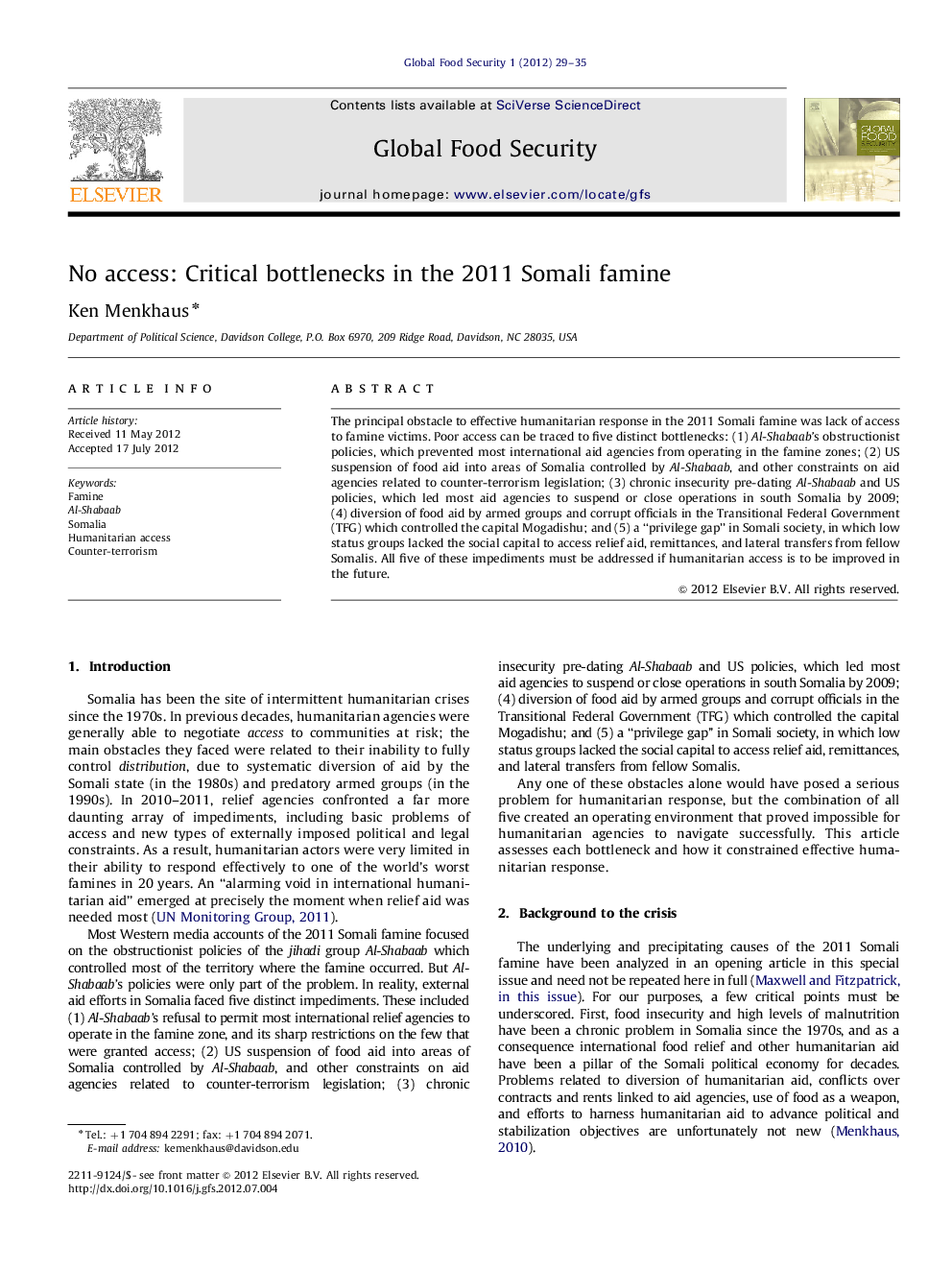| کد مقاله | کد نشریه | سال انتشار | مقاله انگلیسی | نسخه تمام متن |
|---|---|---|---|---|
| 1047619 | 945297 | 2012 | 7 صفحه PDF | دانلود رایگان |
The principal obstacle to effective humanitarian response in the 2011 Somali famine was lack of access to famine victims. Poor access can be traced to five distinct bottlenecks: (1) Al-Shabaab's obstructionist policies, which prevented most international aid agencies from operating in the famine zones; (2) US suspension of food aid into areas of Somalia controlled by Al-Shabaab, and other constraints on aid agencies related to counter-terrorism legislation; (3) chronic insecurity pre-dating Al-Shabaab and US policies, which led most aid agencies to suspend or close operations in south Somalia by 2009; (4) diversion of food aid by armed groups and corrupt officials in the Transitional Federal Government (TFG) which controlled the capital Mogadishu; and (5) a “privilege gap” in Somali society, in which low status groups lacked the social capital to access relief aid, remittances, and lateral transfers from fellow Somalis. All five of these impediments must be addressed if humanitarian access is to be improved in the future.
► Impediments to humanitarian access in the 2011 Somali famine are examined.
► Five bottlenecks to humanitarian access are analyzed.
► Bottlenecks include Al-Shabaab obstructionism, counter-terrorism laws, and insecurity.
► All 5 problems of access remain unresolved.
Journal: Global Food Security - Volume 1, Issue 1, December 2012, Pages 29–35
